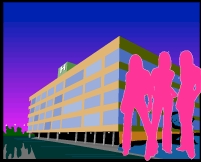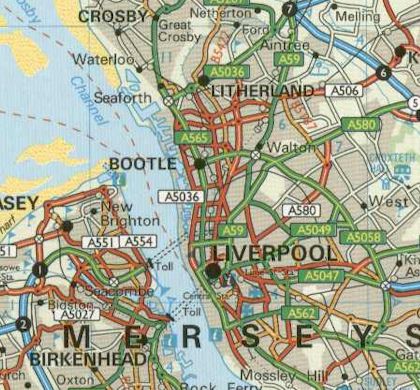what's
this page about then?
 |
|
|
More info on stuff to do with the Kittens...see
what we mean!!!
|
Check
out the...
> biography
for the full history of Atomic Kitten!!!
> profiles
for quick info on each of the Kittens!!!
> people
for info on some of the people who have
musical connections with the Kittens!!! |
|
other
stuff?
 |
|
 This page is
dedicated to 'other stuff' with a question mark.
Why? Well, we thought that the stuff on this
page may be somehow related to the Kittens and that it
makes sense (hopefully) to include it at Atomic Kitten
Active! Judge for yourself! This page is
dedicated to 'other stuff' with a question mark.
Why? Well, we thought that the stuff on this
page may be somehow related to the Kittens and that it
makes sense (hopefully) to include it at Atomic Kitten
Active! Judge for yourself!
> liverpool
> music terms
> virgin record company
|
|
Yep...it's the hometown of
Atomic Kitten and Liverpool can be proud of their massive
music export! So, what's this article all about
then? Liverpool, of course! Read on and find
out more about this great city in England!
Liverpool is the city, seaport
and administrative capital of Merseyside in northwest
England. Population is 448,300 (1991). It was the major textile exporter of nearby
counties: Lancashire and Yorkshire in the 19th and early
20th centuries. Today, it still boasts being a major
seafaring town as it represents the UK's chief Atlantic
port. Along the River Mersey on which the city is
based are numerous merchant quays. Manufacturing
goods exports and other exports from the city have
declined but the city remains a major sea departure point.

Local
produce in the city includes food, electrical
goods and pharmaceuticals. On the outskirts
of the city, Liverpool has seen the development of
motor vehicle manufacture plants, oil refineries
and new port facilities.
Liverpool also includes a number
of fine landmarks. The Royal Liver Building represents a marvel of
architecture and is one of five grade-one listed
buildings that line the city's Albert Dock.
It is characterised by the famous Liver Birds that
top the building. The Albert Dock itself was
opened by Prince Albert in 1846 and from this
stemmed the major development of Liverpool into a
crucial seaport. From 1890, the Dock was
unable to house new steamships developed at this
time and it fell into disuse until its final
closure in 1972. Recently, the Dock was
regenerated and is now a focal point for tourists.
The Albert Dock boasts a number of
cafés, restaurants, shops and bars. Within the city
is the Liverpool Cathedral, being one of two cathedrals in
the city dating from the last century. Of note at
this cathedral are the bells - being the heaviest and
highest in the world. It also has high arches, vault
and organ. There are two universities in the
city. Theatres include the Playhouse at Williamson
Square, Everyman on Hope Street and the Liverpool Empire
on Lime Street. Liverpool is home of two major
football teams: Liverpool at Anfield Road and Everton at
Goodison Park. Places of interest
in Liverpool include: the Tate Gallery Liverpool on the
Albert Dock. It is a gallery of modern art.
The Walker Art Gallery towards the north side of the city
is home of an extensive collection of European art since
1300. St. George's Hall on Lime Street has a
colonnaded façade. Within the city centre on Elliot
Street is an illuminated 450ft tower, St. John's
Beacon. There is also the Liverpool Museum and
Planetarium located on William Brown Street, the Museum Of
Labour History charting working class life on Merseyside
since 1840 on Islington and the Merseyside Maritime Museum
on the Albert Dock. Speke Hall is located in Speke
about 8 miles southeast from Liverpool, and is of Tudor
origin. Liverpool also has its own airport.
This is also located in Speke. The
Liverpool Institute for the Performing Arts is now on the
site once occupied by the Liverpool Institute. It
was here that the Beatles members, Paul McCartney and
George Harrison attended school. The
River Mersey itself is 112km long. It forms from the
Rivers Etherow and Goyt and takes a westward course to
flow into the Irish Sea at Liverpool. The Manchester
Ship Canal built 1894 has a link with the River Mersey.
Merseyside has an area of 650sq km and a population of
1,376,800 (1991).
|
|
You probably don't need to
read this stuff! It's just some info on some of
those terms used in the music business. We've
probably used them across this site too! Read on if
you're interested...
|
 |
a-side and b-side:
The a-side is that side of the record that
includes the music artist's intended hit.
The b-side (or 'reverse' or 'flip' side) features
one or more other tracks. B-sides may never
end up on an album. In the age of CDs, sides
of a disc are somewhat nonsense - although, it's
still true to use a-side for the intended hit and
b-side(s) for all other included track(s) on the
CD. |
| cover: Simple
term. Just means the recording of a track by
an artist other than the original. Best
example! Atomic Kitten doing 'Eternal Flame'
(once a hit for the Bangles - the original artist)
and what a great job they've done!!! |
 |
|
 |
demo: This is
short for 'demonstration record'. It
originates from the early recordings of tracks by
publishers that are heard by music producers and
music artists themselves. These songs may
then be recorded. Recently, a demo
represents a seed in a hopeful future music career
in which a new artist can record their own
material so that they may clinch that vital record
contract. You can find a demo of 'Right Now'
on CD#2 of the Kittens' first single! |
| promo: You
know this one already!!! For definition's
sake, it's short for (obviously)
'promotion'. Record companies let radio
stations know of a new track which the station
will decide to add to their playlist. CDs
that are loaned to the radio station are called
'promo copies' or simply, 'promos'. |
 |
|
 |
single: We're
not going to define it! That's being
silly! Instead we'll tell you (if you didn't
know) that the word comes from the original 7-inch
vinyl records that music artists once
released. One side had one song - the a-side
- and the other side also had one song - the
b-side. Today, the format is no longer true
of vastly released CDs but the basic principle of
single releases still holds. |
|
|
Atomic Kitten are signed up
to Innocent, a label of Virgin Record Company. The
following is a bit about the history of this highly
successful record company.
In 1973, the successful entrepreneur,
Richard Branson established the Virgin record label.
This followed on from the success of his retail
stores. Virgin's first release was 'Tubular Bells'
by the top artist, Mike Oldfield. This album set a
firm foundation for the Vigin record label doing
excellently by selling well over 5 million copies.
Virgin became the caretaker for English rock bands like
Robert Wyatt and Hatfield & The North. By 1977,
Virgin were signing up the popular Sex Pistols. Other big
names like XTC came along. The record company has
seen a diverse range of music styles being catered
for. By the start of the 1980's, Virgin became the
record label for key acts of the decade such as Culture
Club, Heaven 17, Simple Minds and Human League.
Great soloists: Phil Collins, Paul McCartney and Elton
John represented the best of Virgin. Subsidiaries
including Virgin America were signed up with big names
such as Lenny Kravitz. In 1992, Virgin Records was
sold to Thorn EMI. |
|
connected
links
 |
|
|
|
|
|
|
|
|
|